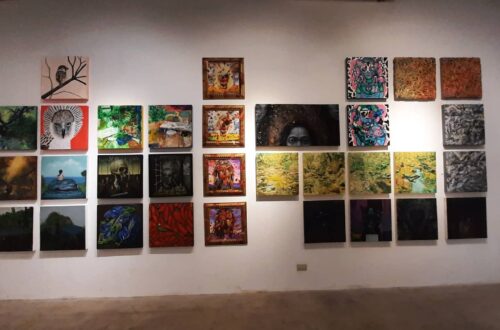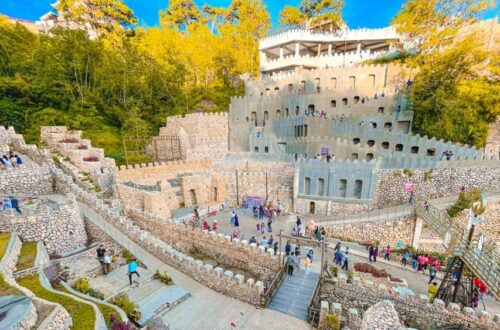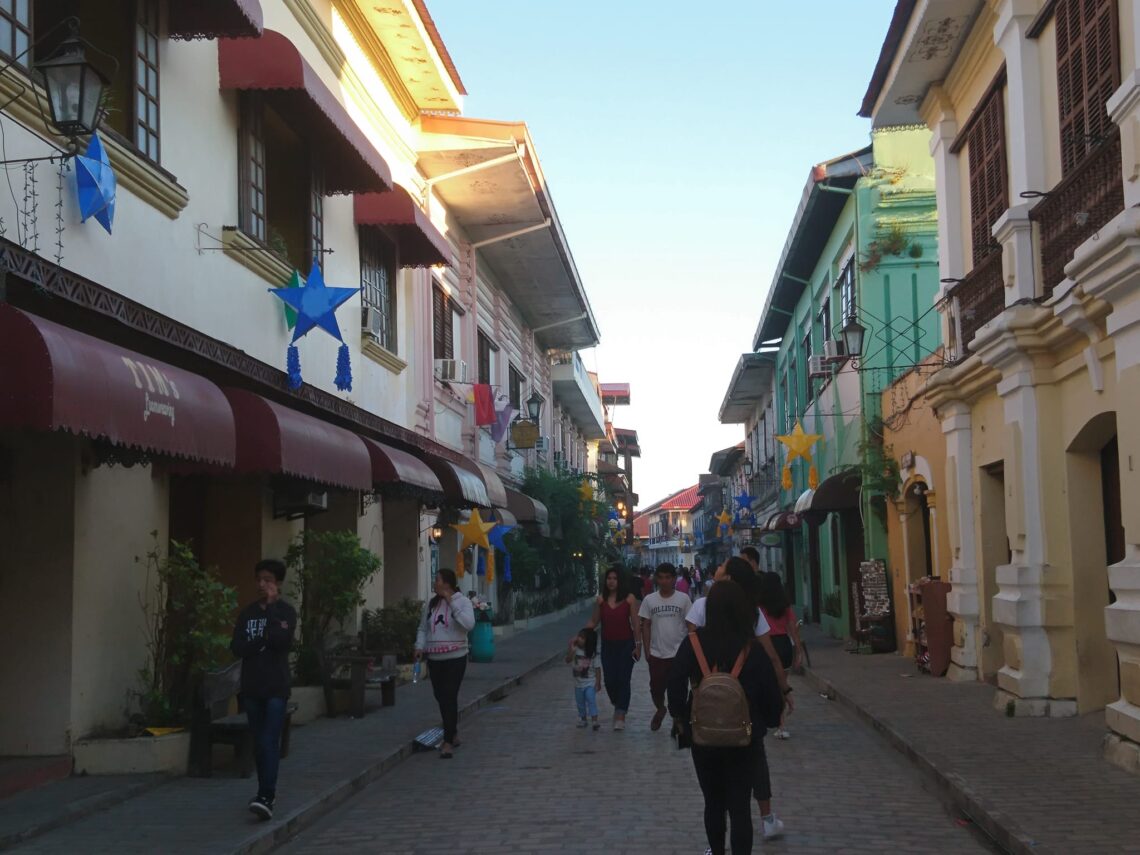
Vigan City Philippines (History and Facts)
History and Background
Vigan is a historical city located in the province of Ilocos Sur. It is well known for its preserved sixteenth century Spanish architecture and mouthwatering food. Vigan is the capital city of Ilocos Sur. It is just 407 kilometers away and a seven hour road trip coming from Metro Manila. Also it is just 138 kilometers away from the city of San Fernando City in La Union and 82 kilometers away from Laoag which is the capital city of Ilocos Norte.
Vigan has a total area of 25 square kilometer or 2512 hectares. It mostly consists of plain land with tender hills used for cultivation and residential areas. Vigan has a total of 39 barangay where most of them are labelled as agricultural. The main service provider of electricity in the region is the Ilocos Sur Electric Cooperative (ISECO). The native language in Vigan is Ilocano and Tagalog.
The reason its called Vigan is that it comes from the tuber plant “Bigaa” which is considered a giant Taro plant, a root crop of the Gabi family, and it mostly grows along the side of the Mestizo River. According to the famed story, once upon a time, there’s a Spaniard walking beside the Mestizo River and he met a native Ilocano. The Spaniard asked the native Ilocano what is the name of this place. The native Ilocano didn’t reply but the Spaniard was aiming to a plant called Bigaa in Ilocano language. Accordingly, Vigan obtains its name from a simple communication.
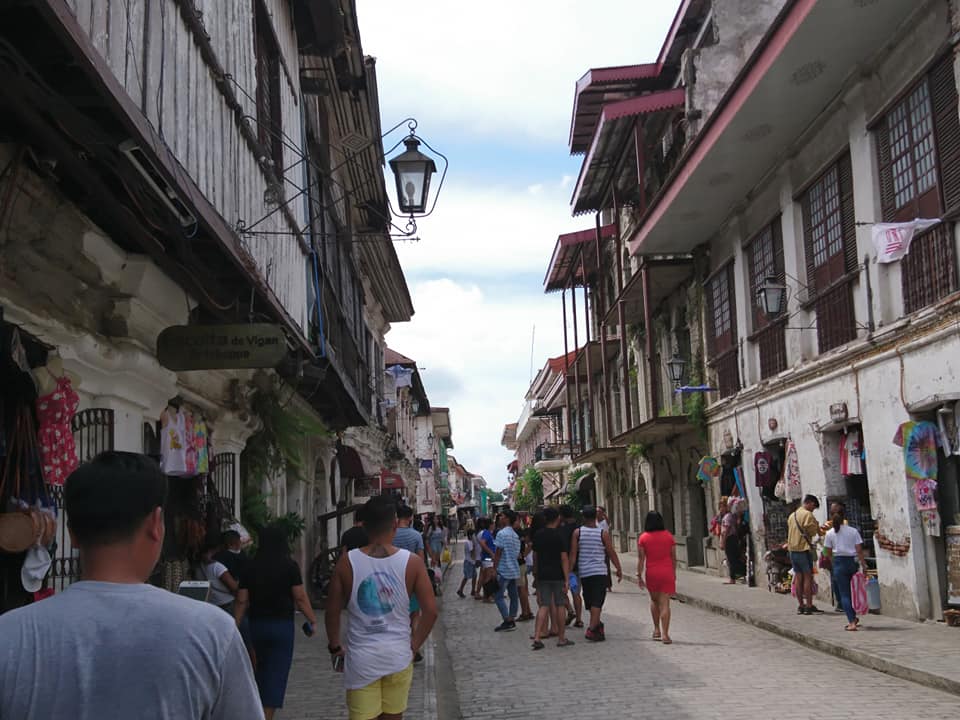
According to its past history, Vigan was a significant land during the pre-colonial period in the Philippines. Many Chinese traders and merchants sail in the South China Sea and Mestizo River in order to arrived at Isla de Bigan to gain more profit. From there, they meet the Filipino traders and exchange goods such as honeycomb, gold, mountain products and exotic goods. On the other hand, most Chinese merchants stayed in Vigan for many years and it resulted in the diversity bloodline of the Biguenos through marriage.
In the year 1572, King Philip II of Spain command the Spanish soldiers to reach the shores of Vigan during the Spanish colonial period in the Philippines. Afterward the exploration and voyage of Spanish soldiers in the Northern Luzon has been thriving. At the same year Vigan was captured and founded. For this reason, conquistador Juan de Salcedo establish Villa Fernandina de Vigan to dignified the late Prince Ferdinand who died at the age of four and is the son of King Philip II.
In return for his services to King Philip II, Juan de Salcedo was granted and take control of different provinces in the Northern Luzon such as Ilocos Sur, Ilocos Norte and Abra. Two years later, Juan de Salcedo returned to Vigan accompanying some Augustinian Missionaries in order to start the Christian preaching evangelization in Ilocos region. Soon, Ilocos Sur became a Spanish colonial religious and political power in the Northern Luzon.
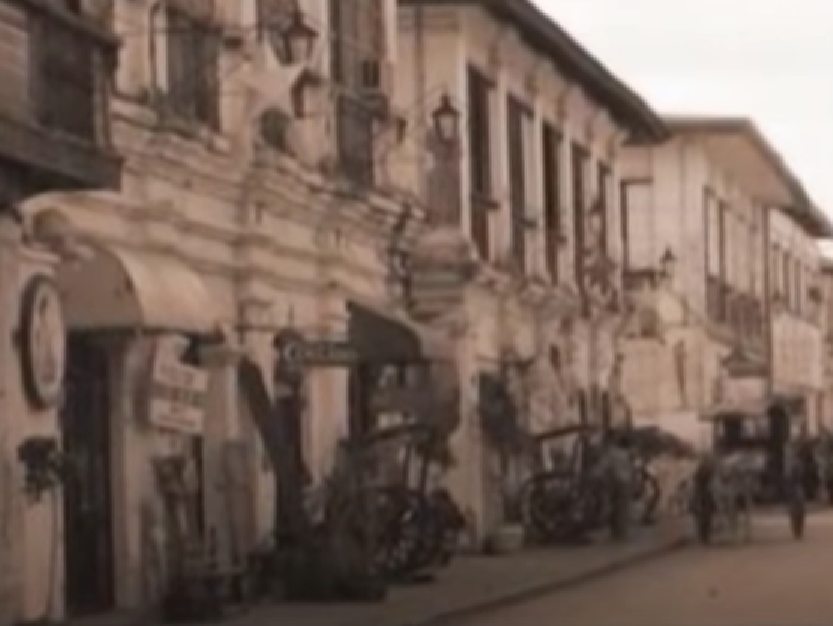
In the year 1591, Vigan has a total of nineteen barrios and it’s considered a very strategic place for Spanish galleons. Fast forward to 1660, Vigan composed of twenty-one Cabeza de Barangay as declared in the book “Libro de Casamiento” which is considered as one of the antique records of the Vigan parish house. Meanwhile, Chinese dwellers have their own place of community called pariancillo. Contrastingly, Spaniards have their own place of community called Los Españoles de la Villa.
In 1758, Vigan became the seat of the Archdiocese of Nueva Segovia. Years later, Vigan was a ground of anti-Spanish power movement. Diego Silang is the most popular Filipino resistance leader in the region. However, he was assassinated by his own friends in May 1763. Subsequently, the wife of Diego Silang named Maria Josefa Gabriela Silang became the head of the uprising movement against the Spanish rulers and officials. Even so, she was captured and shamelessly hanged by Spanish soldiers in the same year.
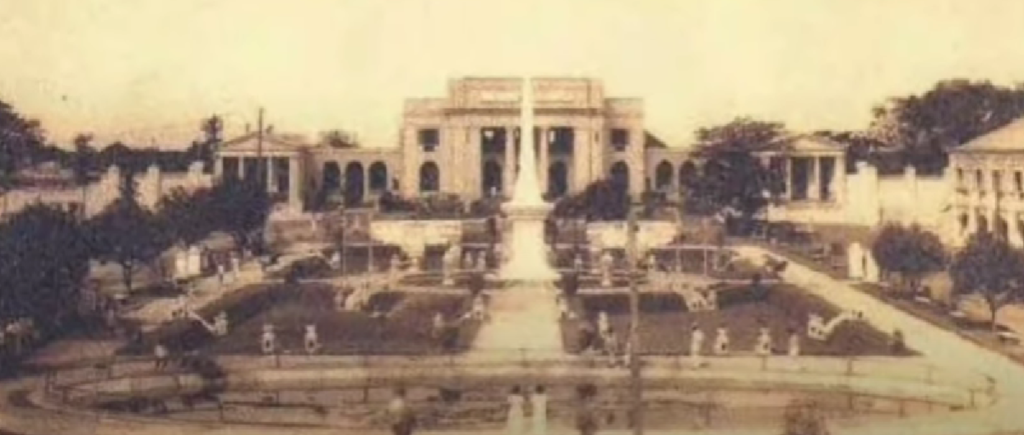
Fast forward in December 1941, Vigan was invaded by the Japanese Imperial Army during the devastating Second World War. Four years later, Vigan was liberated by the combined Philippines soldiers and United States army. In the year 2000, former President Joseph Ejercito Estrada signed the Republic Act No. 8988 which stated the revalidated and recognized Vigan’s city status granted by virtue of the Royal Decree in 1757, issued by King of Spain Ferdinand VI. The signing serves as Vigan’s present city charter.
In the year 2015, Vigan City was acknowledge as one of the Seven Wonder Cities of the World conjoined with La Paz in Bolivia, Beirut in Lebanon, Doha in Qatar, Durban in South Africa, Havana in Cuba and Kuala Lumpur in Malaysia. The ceremony took place in the Metropolitan Cathedral of the Conversion of St. Paul where founder and president of New 7 Wonders Bernard Weber gave a bronze plaque to Vigan City Mayor Eva Grace Singson-Medina which embodies the heritage city’s election.
On July 27, 2022, Vigan City felt the magnitude seven earthquake with its epicenter on Abra province. Much of the historical places have been damaged including the iconic Bantay Bell Tower, Vigan Cathedral and some houses in Calle Crisologo. Nevertheless, the local government unit (LGU) of Ilocos Sur and the Philippines government agencies quickly responded, gave necessary aid to the families affected and restored much of the historical places and houses.
Presently Vigan is one of the UNESCO (United Nations Educational, Scientific and Cultural Organization) World Heritage Sites. It has a total population of 65,000 people. As of now, Vigan is now open for all local and international tourists. So if you want to see the Spanish colonial era houses, old streets and architecture then visit Vigan as soon as you can to discover more about the history of the Philippines.
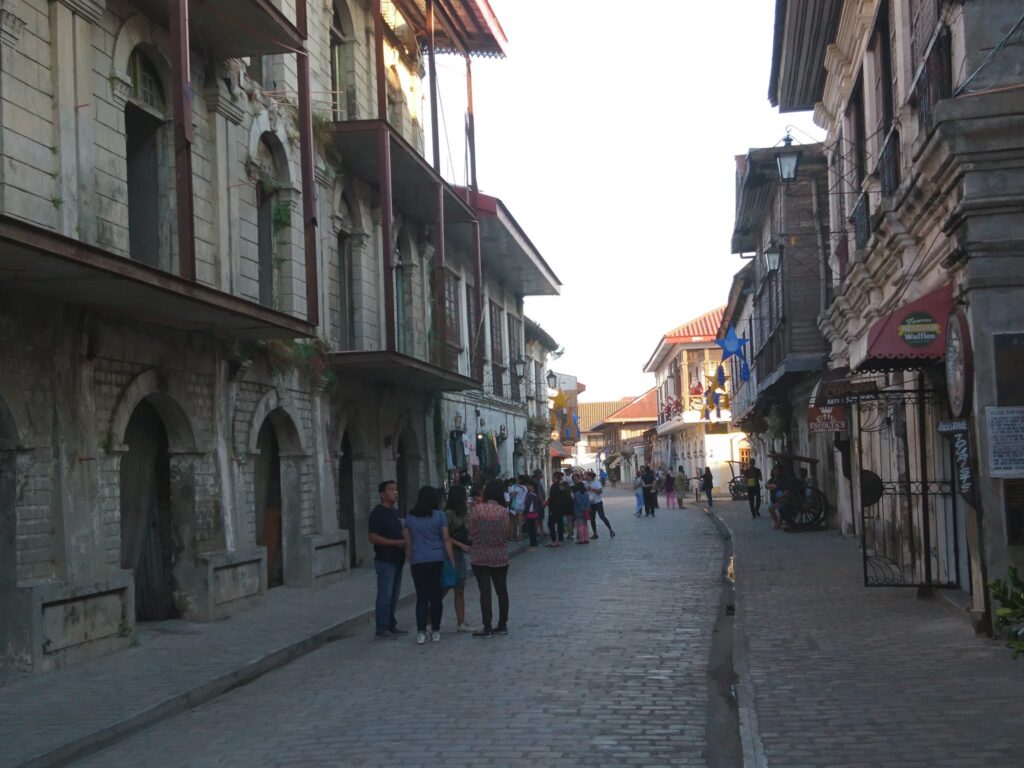
Places to visit in Vigan:
Bantay Bell Tower – is one of the most visited tourist attractions in Vigan City which is located in the Bantay municipality. It is situated just sixty meters away from the Bantay Church and ten minutes away from Vigan. It provides tourists with a superb pleasant overlooking view of Vigan and some parts of Abra province. Bantay Bell Tower has a height of 100 feet or 30 meters.
Bantay Church is well known for its amazing architecture and design which is influenced by European civilization. It is home to a statue of the Our Lady of Charity and it is frequently visited during the feast by devotees who are praying for their dream to come true. Furthermore, the Bantay Church has made of thick walls to help maintain its dominant presence within the town and to save the structure from future strong earthquakes.
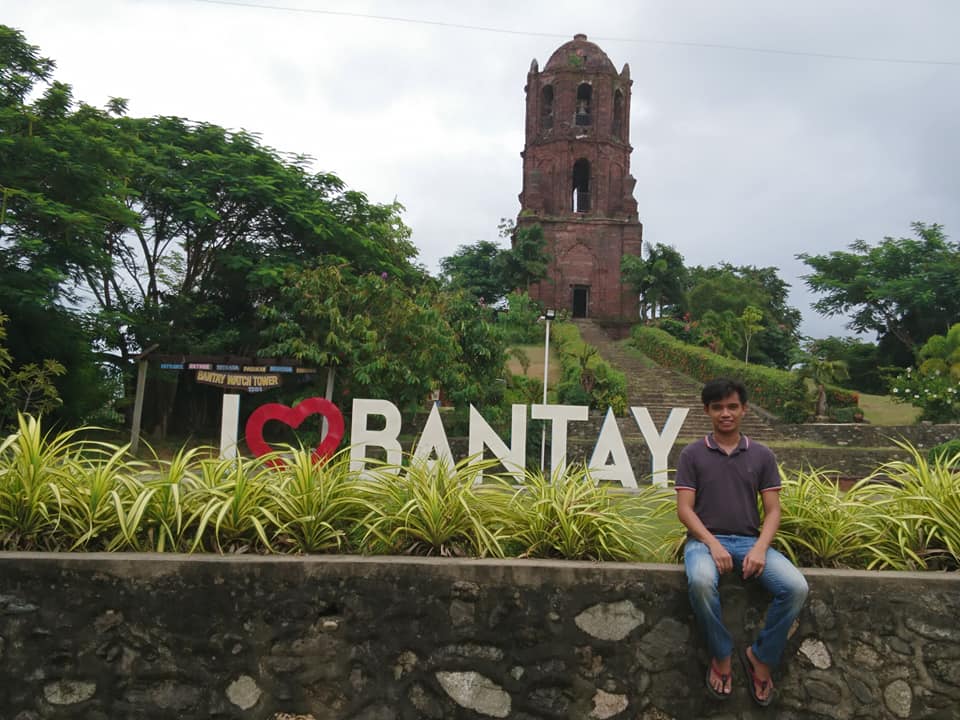
From my experience, it’s nice and lovely to go inside the Bell Tower and admire the significant huge Belfry’s bell located in the middle of the tower. Moreover, getting to the top of the bell tower is easy. Visitors like me just need to sign a guestbook near the entrance and you may optionally donate some small cash amount to guarantee the tower is taken care of. Afterward, a short walk is needed to get inside the tower.
At the top of the Bantay Bell Tower, I can clearly see the entire surroundings of Vigan. For this reason, I take quality pictures as my remembrance of this historic place. I think it’s the best place to see the entire view of the historic city and to experience tranquility in a serene sanctuary place. In addition, near the tower is a small church where you can meditate and reflect on life while cherishing the colorful small garden surrounding it.

The reason it’s called Bantay Bell Tower is that it is derived from the Tagalog word “bantay” which means “to guard”. According to its past history, Bantay Bell Tower was constructed in the year 1591 by the Augustinian priest during the Spanish colonial period in the Philippines. It is mainly used as a watchtower by the Spanish soldiers to look out for invading pirates and foreign enemies.
During the seventeenth century, Bantay Bell Tower was the treasured dating spot of Filipino revolutionary leaders Diego Silang and Gabriela Silang. In the year 1857, the watchtower transformed into a bell tower and became the most significant iconic tower in Vigan.
Fast forward to the nineteenth century, the Bantay Bell Tower served as a good vantage point during the Philippine revolution against the Spanish regime. Years later, it was used again as a watchtower during the Second World War against the Japanese army because of its very essential location. Even so the bell tower was heavily damaged and rehabilitation programs were created during the 1950’s.
On July 27, 2022, Bantay Bell Tower was severely damaged by the magnitude 7.1 earthquake. In a short video shown by a netizen on a social media account, parts of the Bantay Bell Tower shake and crumble during the powerful earthquake hit parts of Northern Luzon. As a result, the site was temporarily closed to all local and international tourist.
Presently, Bantay Bell Tower is one of the ancient church in the province of Ilocos Sur. As a result, many tourists take astonishing pictures at the ground level of the tower as if they’re holding it on their two hands or forming a symbolic heart shape with their arms extended over the iconic tower.
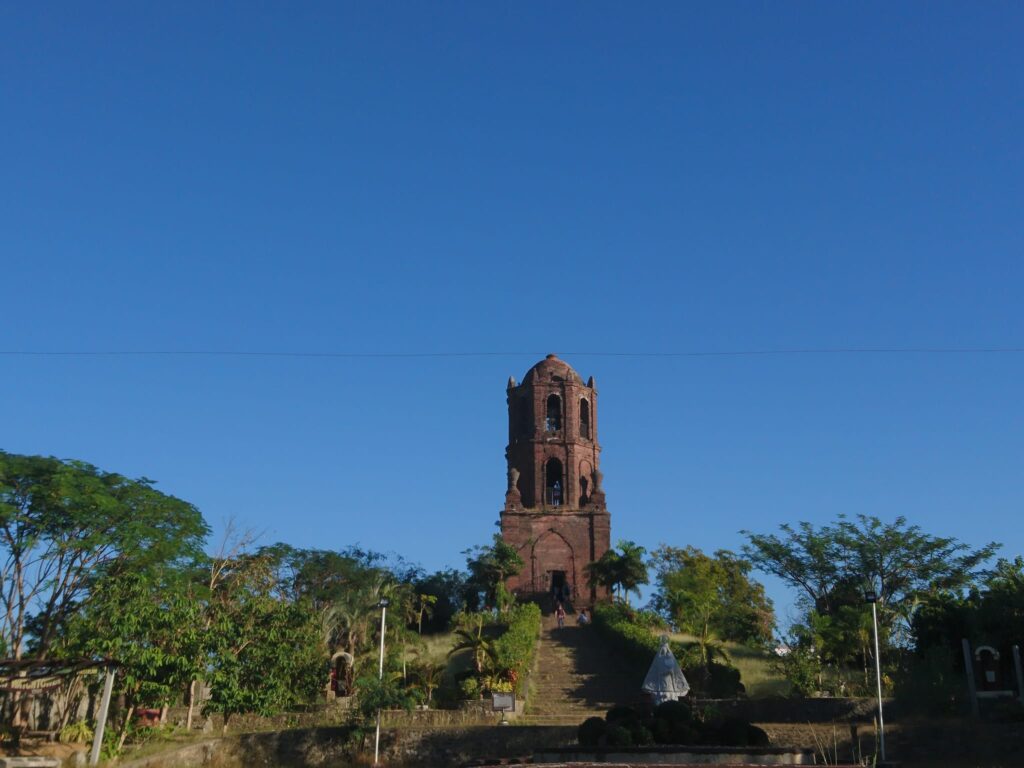
Calle Crisologo – is the most well-known tourist spot in Vigan City located in the province of Ilocos Sur. It is a five-hundred-meter historical street that highlights a fifteenth to sixteenth-century old Spanish architectural house with ancient cobblestone and attractive lamps. Around two hundred beautifully restored houses can be seen on the street which showcases the mingling of Spanish and Filipino styles.
In addition, many Spanish horse-drawn carriages, or “kalesa” in Tagalog word can be found on this street for transporting people. For this reason, it is one of the most photographed and fascinating streets in Vigan. From my perspective, while having a walking tour, Calle Crisologo is like a scene in the movie because of its ancestral houses and asphalt road which is very akin to Southeast Asian cities such as Hoi An in Vietnam and Malacca in Malaysia.
It’s amazing how they preserved the Spanish colonial era ancestral houses in Vigan for so many centuries. Also, I feel like I was teleported way back in the past like a time machine because the street is a pedestrian-only section which is good for horse-drawn carriages. From here, the dancing fountain show and Plaza Salcedo are within walking distance only.
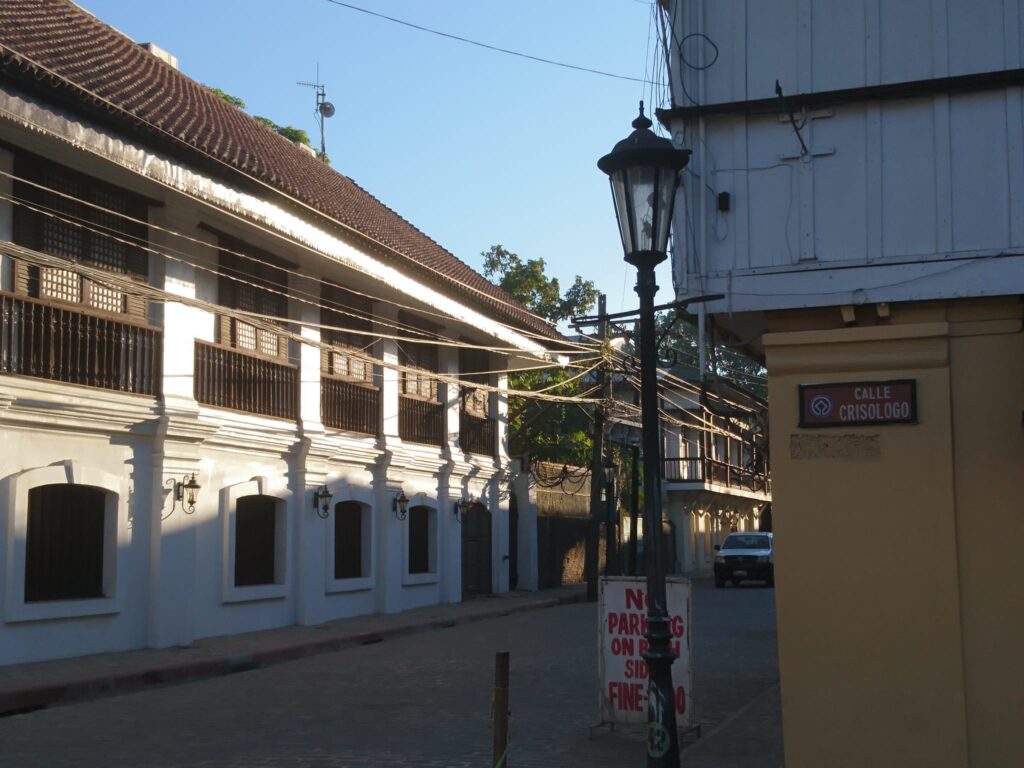
According to its glorious history, many houses in Calle Crisologo were built and owned by prosperous Chinese traders who migrated to Ilocos Sur to set up trading and merchandising before the colonial periods of the Philippines. They became successful because of the Manila to Acapulco trade. Then as the years passed by, much of the house’s design highlighted Spanish and Asian architecture such as the vast walls, huge doors, red-tiled roofs, and shell windows. It was said that Calle de Escolta de Vigan is the old name of the street during the Spanish colonial period in the Philippines. It is home to upper-class families who profited much from the galleon trade in Ilocos Sur port.
The name Calle Crisologo originated from the eminent Ilocano writer Governor Mena Pecson Crisologo as a tribute when he died in the year 1927. During his time, he is very much appreciated within the Ilocos province. In the year 1989, Vigan was submitted for consideration as a World Heritage site. With the help of local campaigns and programs of Vigan rich history it became vital for the examiners.
Fast forward, Calle Crisologo was listed in the UNESCO World Heritage Site in the year 1999. Years later, it was well known to many locals as the heritage village. Presently, Calle Crisologo is filled with lots of souvenir stores that sells variety of native item such as antiques, jewelry pieces, furniture, clothes, blankets and accessories. It is a must see-destination in Vigan during day and night time. Without a doubt, a tour to Vigan will not be complete without exploring the historic Calle Crisologo.
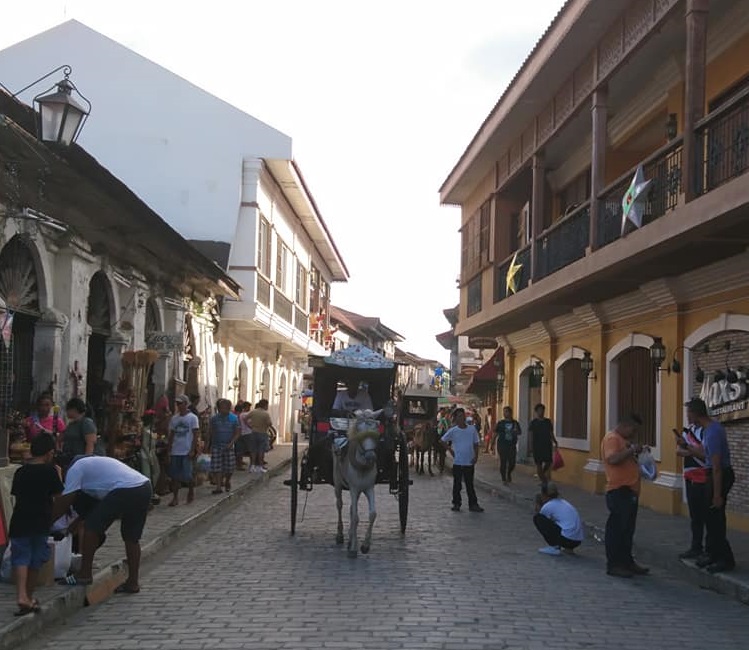
Vigan Cathedral – is a UNESCO World Heritage Site located in front of Plaza Salcedo in the city of Vigan. It showcases an eccentric architecture and style commonly known as earthquake baroque to lessen the impact of a powerful earthquake. Vigan Cathedral consists of an eight-sided bell tower and gothic communion handrails in the south which contemplate the Chinese Feng shui prestige. Moreover, it is home to the tombstone of the excellent Ilocano writer named Leona Josefa Florentino.
Near the cathedral is the only surviving and oldest Archbishop’s Residence in the Philippines. According to its past history, Vigan Cathedral was constructed by the Spanish rulers in the year 1574. During that time, it was just a simple chapel. In the year 1641, it was transformed into a church and it was completely finished during the eighteenth century. It is considered by many locals as a place for worship and making wishes. Also, it where the seat of the Archdiocese of Nueva Segovia can be found.

Plaza Salcedo – is a very clean park located in Vigan City which showcases dancing fountain show at night. It is surrounded by Vigan Cathedral, Archbishop’s Palace, the Ilocos Sur Provincial Capitol and Vigan City Hall. During the night, Plaza Salcedo was fully loaded with tourists who wanted to witness the striking display of vivid laser lights that lighten the park square together with the slow to fast tempo music playing on the background. For this reason, it is a very good place for taking wonderful pictures while enjoying the mesmerizing fountain show.
According to its history, Plaza Salcedo was named in honor of the Spanish conqueror Juan de Salcedo who established the third of many Spanish resolution in the Philippines in 1572. A statue was built in the city square which is encompassed by all the essential Spanish structures of the town. Afterward, Plaza Salcedo was the place where local hero and first woman leader of the Philippine revolution Gabriela Silang was executed by the Spanish rulers during 1763.
Presently, Plaza Salcedo is home to a beautiful garden where man-made copycat wonders such as Eiffel Tower in Paris, St. Basil’s Cathedral in Moscow and Big Ben in London can be spotted. It is the favorite bonding place of the Ilocano as well as visitors coming from different parts of the country. In my opinion, Plaza Salcedo is a good place for a food trip because the food here is not expensive compared to other tourist spots in the Ilocos region.
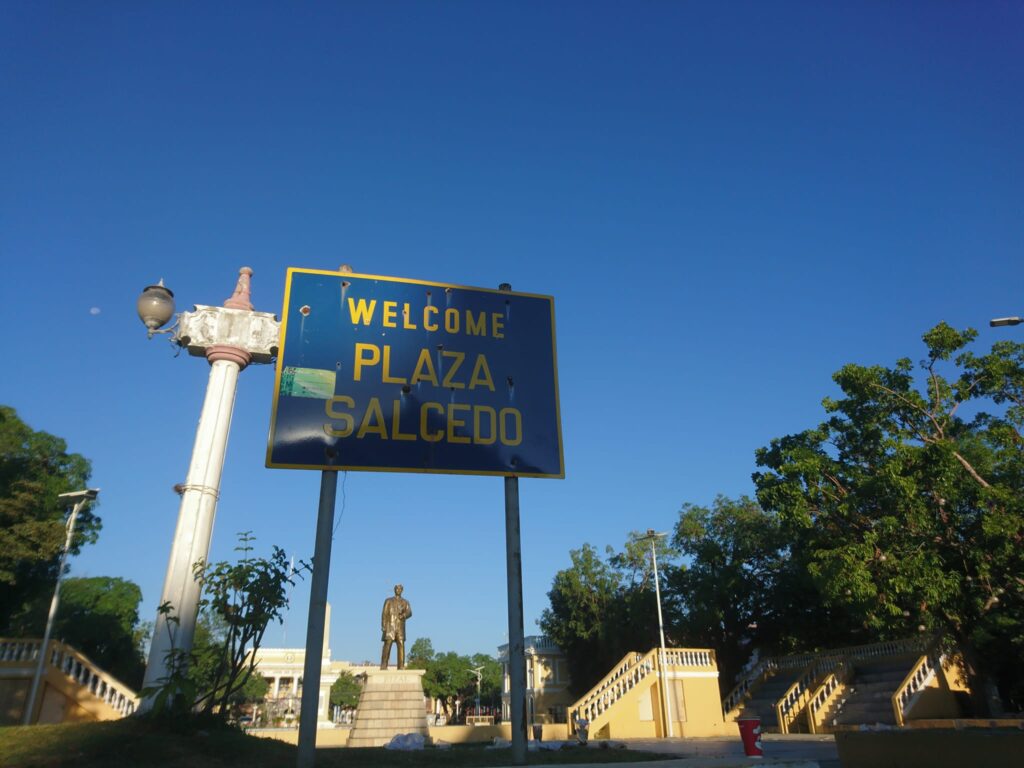
Plaza Burgos – is located beside Vigan Cathedral. It is smaller than Plaza Salcedo. According to its glorious history, Plaza Burgos was built as a tribute to Filipino catholic priest Jose Burgos during the Spanish era in the Philippines. As of today, Plaza Burgos have many local stores that sells popular snacks such as empanada, ice cream, vigan longganisa, royal bibingka, tinubong, sinanglao, fried flavored tasty corn and arroz caldo.
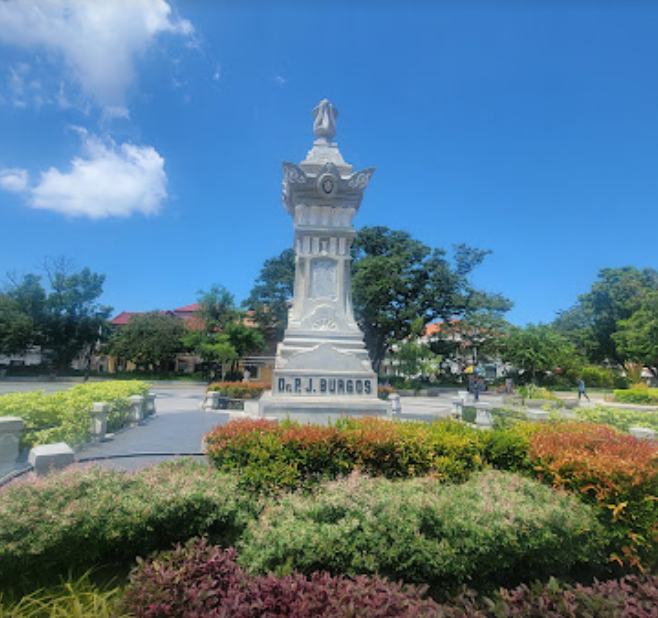
RG Jar Factory – is one of the notable tourist spots in Vigan which is located at Gomez Street in Barangay VII (Pagburnayan). It offers tourists a different kind of traditional handmade clay pots, jars and vases at an affordable amount. Rg Jar Factory has been standing through the test of times. Ilocanos are using the pots and jars in their kitchen over plastic that we could not use for cooking. As of today, Rg Jar Factory is teaching all visitors how to make earthen jars and pots because it has made the Ilocano culture well-known around the Philippines and to the whole world.
According to its past history, Pagburnayan originated from the root word “burnay” which means hand-crafted pottery made from Vigan. It is a place where they used the old methods in pottery crafted by potters’ skilled hands. The clays cultivate from the western section of the city with the help of the potters’ wheel. It uses fine sand as a moderating material and is fired at an extreme temperature in a huge brick-and-clay ground pottery oven which is over 100 years old which makes it harder and more reliable than other Terracotta.
Burnay was brought by Chinese artisans who introduced the native artisans in Vigan before the colonial period in the Philippines. Then the trading of the Ilocanos and Chinese resulted in the jar’s ability to enhance the taste of food. Presently, RG Jar Factory is one of the last surviving jar factories in Vigan City. Appreciate and love the beautiful earthen jars and pots that you bought as a gift or souvenir.
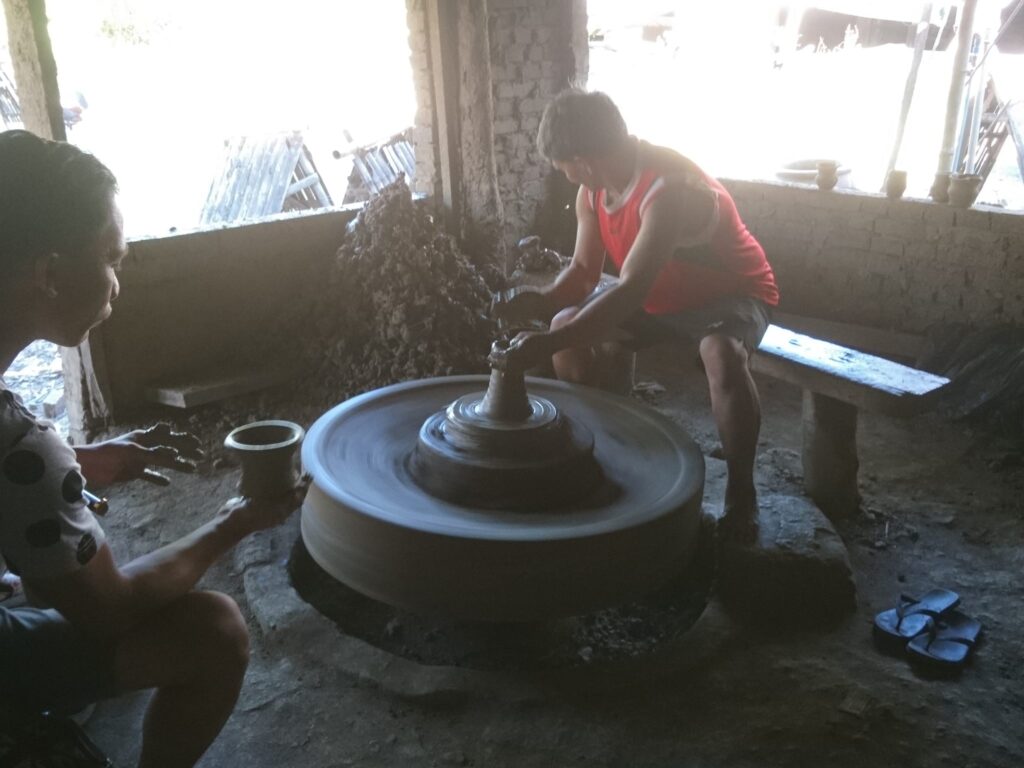
From my experience visiting RG Jar Factory in Vigan, I recall the old story of our teacher in my elementary days about how to make a simple jar from a small clay that was taken from the field and molded to make a form or shape. Undoubtedly, it was a great and fun experience to try this again at the jar factory. The staff encourages our group to try our hands at the wheel and at the throwing parts. One member said that throwing is a lot harder than it looks.
According to one of the staff we’ve talked to, Pagburnayan used to be the popular handmade clay pot in Ilocos Sur until they start asking for donations. As a result, the local guide started to bring tourists over to Ruby Jar Factory instead. The staff said that clay pottery is a fading industry nowadays because of modern technology. Nevertheless, it’s a good source of livelihood and sideline for those who are proficient in making handmade clay pots.
In addition, the staff told me that the local bagoong, native Basi wine, and sugarcane vinegar would not taste as good as if not soured in burnay jars. Ilocanos used Carabao to step on the soil material to crush and refine the soil. Afterward, they mix the soil and water it to come up with clay. Then the clay is covered with plastic and preserved for a month. With the help of the potter’s wheel, a burnay is shaped by a craftsman’s hand. Lastly, the product is fortified when baked inside a ground kiln at a very high temperature.
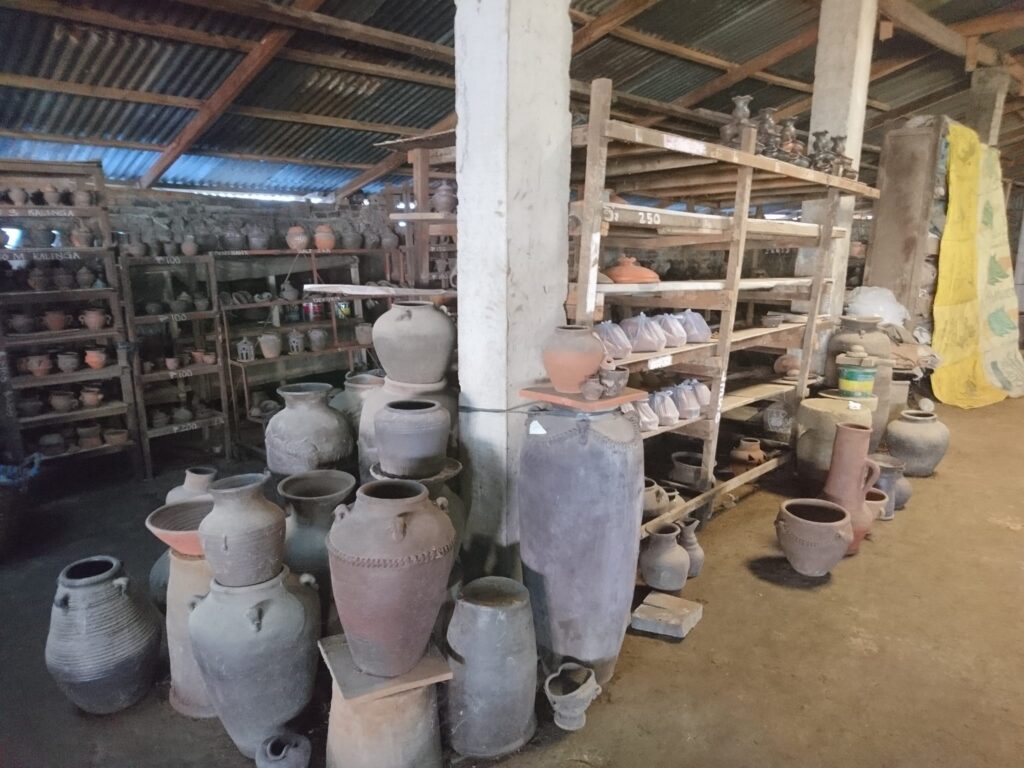
Apart from this, the baking and cooling of jars take days or weeks to complete. Then he told us the secret of making handmade clay pots. The secret is in the hands that mold the clay, the legs that move the machine, and the heart that is brimful with love for the other person who will use the item. I’m so happy to be there and to experience molding a delightful jar. For this reason, I will cherish unforgettable moments. Before we leave the RG Jar Factory we donate some cash and other members buy fantastic souvenirs such as hats and bases.
Please be reminded that there’s no entrance fee at RG Jar Factory. So if you travel to Vigan, I highly recommend you to try Pagburnayan to create your own jar and pot. Let us revive this craft and educate the younger generations about our own lovely arts.
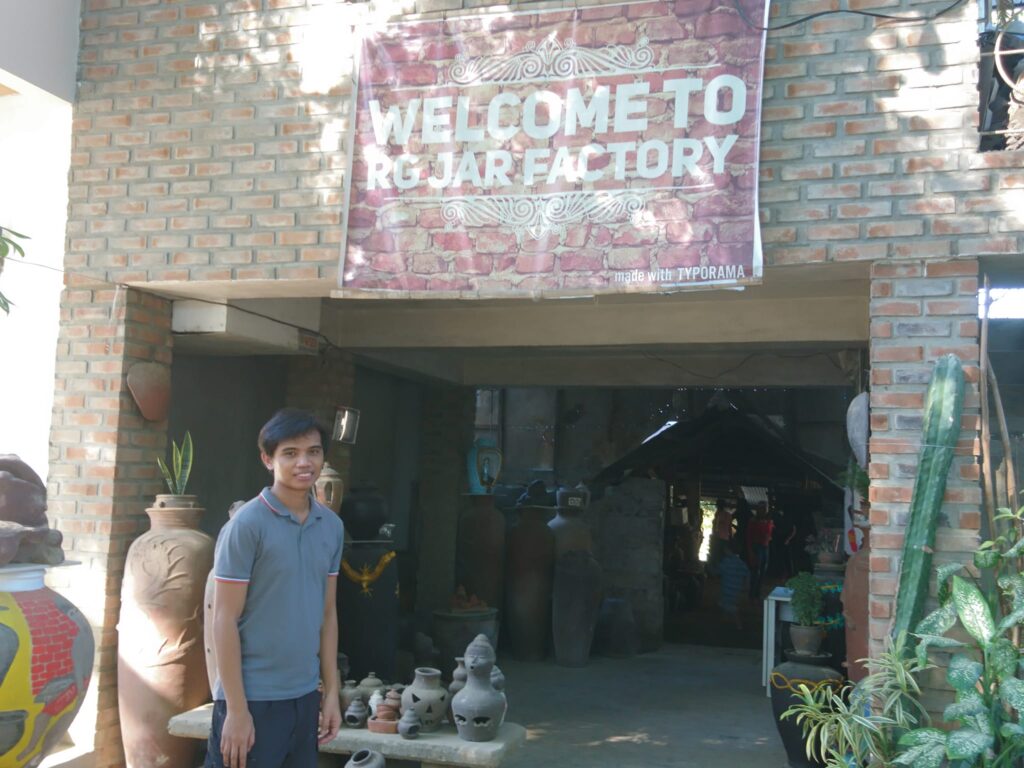
Baluarte Resort and Mini Zoo – is a well known zoological park in the city of Vigan. It is currently owned by a Filipino businessman and politician Chavit Singson. Baluarte Resort is situated in Quirino Boulevard, in the Barangay Tamag in the city of Vigan. It is just thirteen minutes away from the historical Calle Crisologo.
Baluarte Resort and Mini Zoo has a total size of 120 hectares or 1.2 square kilometers. Inside the rolling hills, landscaped garden, and plains of Baluarte, visitors can see lots of animals such as monkeys, leopards, horses, ostrich, deer, camels, butterflies, albinos, peacocks, iguanas, snakes, different types of birds, cloud rats, crocodiles, reptiles, Bengal tigers, and lions as well as the other endemic animals inside the cage and fenced areas.

Also, there’s a horse riding track, a large museum, and a shooting range at the Baluarte. For this reason, we take too many photos while we’re exploring the elegant zoo park. According to the Baluarte staff, the zoo is a private collection and is therefore continuously being improved for visitors who want to get close to wonderful animals. Presently, it is called by many the “Home of the big cats in Vigan” and the “Fortress of Vigan.” It is where the former governor’s multi-story house sits with an impeccable view of the city.
According to its past history, Filipino businessman Chavit Singson used his property and collection of animals to share his affection for a safari with the public. From time to time he accepts a request from visitors for memorable pictures to be taken with him. Presently, there’s no admission fee at Baluarte Resort and Mini Zoo but they offer tourists a guided tour with the help of an electronic cab or shuttle service for only 50 pesos.
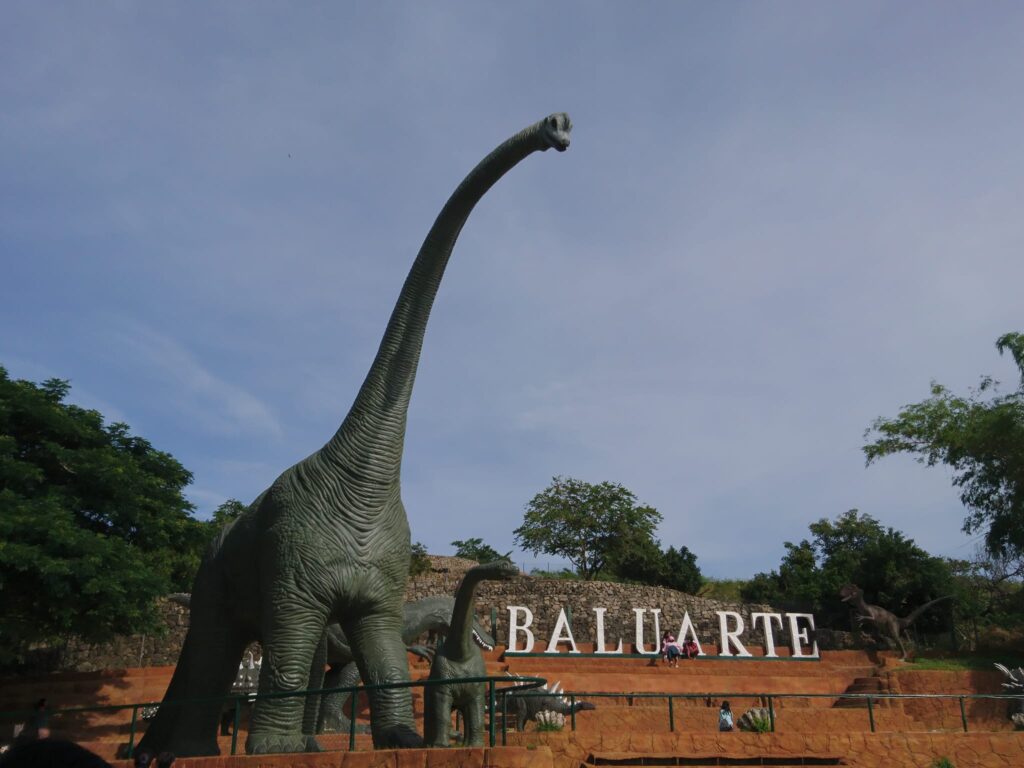
Hidden Garden Vigan – is one of the top gardens in the Philippines and is a hidden gem in Vigan City. It provides tourists with a very relaxing and beautiful green landscape where they can see different kinds of plants and they can buy them as a souvenir. Hidden Garden is located at Katipunan Street, Barangay Bulala, Bulala Centro village in the heart of Vigan City.
According to its history, Hidden Garden Lilong and Lilang Restaurant were opened to the public in the year 1999 and it is managed by Rafaela Flores. As the years go by, Hidden Garden Lilong and Lilang Restaurant is more than just a place to get enticing homemade breakfast, snacks and lunch combos.
From my experience exploring the Hidden Garden, it is actually hidden but they have some very cool attractive plants, statues, pots, and other cool artwork which the majority are for sale. The owners and the staff were so warm, friendly and kind. It truly offers a refreshing ambiance with all the fantastic garden set up and festive decorations. Upon entering, our group was welcomed by their souvenir shops that sell a variety of clothes and decorated plants.
Also, I love the authentic delicious fresh food menu at the restaurant such as Ilocano dishes with signature sandwiches and assorted drinks, bagnet lomo-lomo, pinakbet, empanada, halo-halo, fresh fruits shake, Warek-Warek Igado, Poqui poqui longganisa and Poqui poqui pizza while we’re having our late group lunch. It was so very satisfying. Without a doubt, it is a good side trip after exploring Vigan especially if you are a plant lover. I will definitely come back to this place again. As of today, Hidden Garden has no entrance fee.
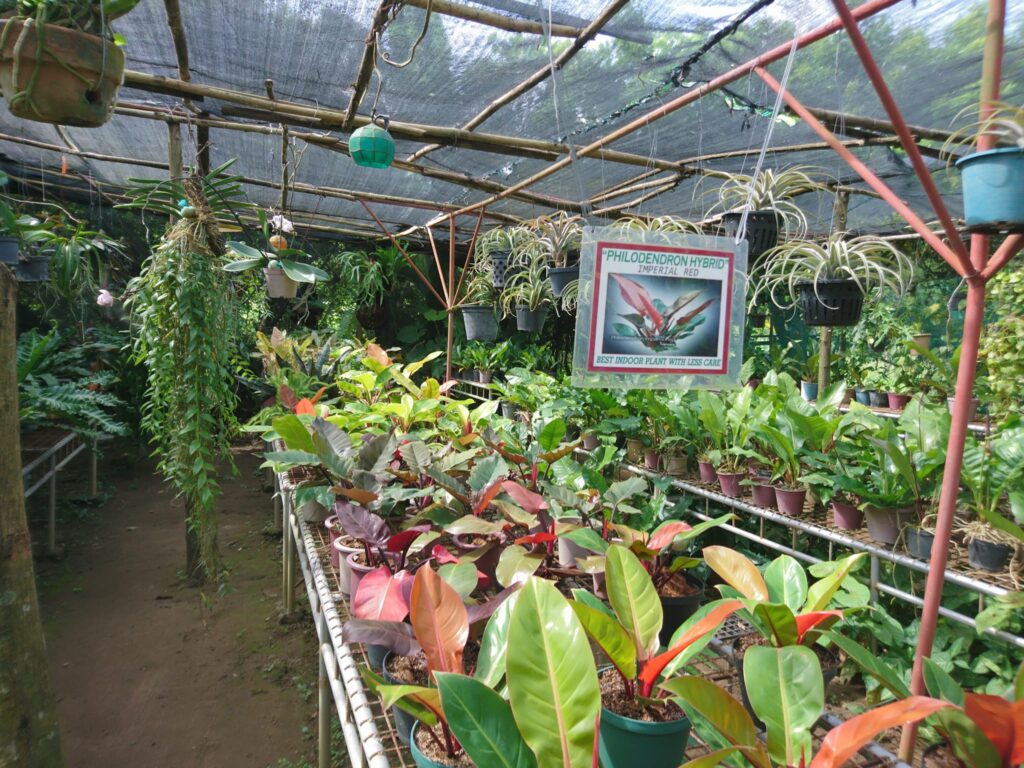
Syquia Mansion Museum – is a museum located along Crisologo Street in the corner of Quirino Boulevard in Vigan City. The museum is dedicated to the former President of the Philippines Elpidio Quirino. Inside the huge museum, visitors can see exhibits, antiques, old furniture, high ceilings, campaign memorabilia, porcelain ware and popular portraits from the Philippines and some other countries. Moreover, there is a immense copy of Spoliarium by Filipino painter Juan Luna.
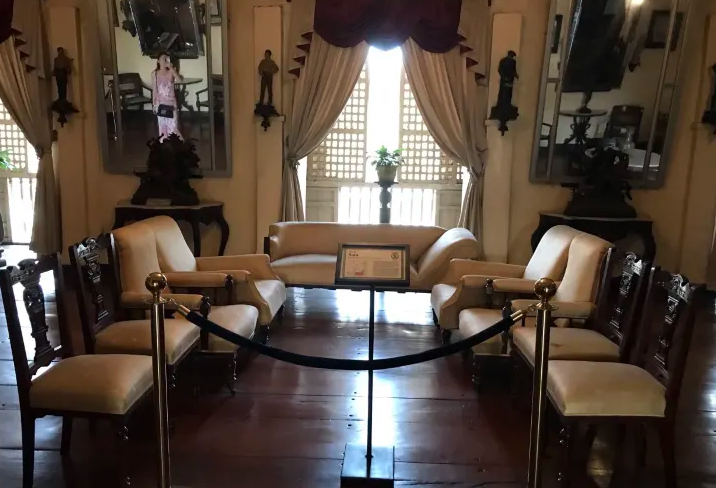
Quirino Bridge – is a 456 meters arch bridge with two lanes that link the municipality of Bantay and Santa in the province of Ilocos Sur. It provide tourist a superb view of Lagben River and astonishing mountain backdrop in Barangay Banaoang.
According to its past history, the camelback Quirino Bridge also known as Banaoang Bridge in the past decades is named as a tribute to the late sixth President of the Republic of the Philippines Elpidio Quirino who was born in the city of Vigan. In the year 2001, the 320 meter old Quirino Bridge that has a grand architectural design was badly impaired because of the super typhoon named Feria and it resulted to a super heavy traffic in the region. Nevertheless the government of Ilocos Sur quickly fixed the impaired bridge. Six years later, a new bridge was built beside the old bridge. It is a major component of the Japan-funded Urgent Bridges Construction Project for Rural Development which aim to replace old bridges with new bridges on national roads that lead to major city all over the Philippines. The new Quirino Bridge was opened in December 2009 during the term of the former President Gloria Macapagal Arroyo. It has a longer length compared to the old bridge.
Fast forward, it has been the setting of the popular Filipino movie such as FPJ’s Ang Probinsyano. As of today, Quirino Bridge is one of the most significant bridges in Vigan. Thousands of motorists and driver passed this bridge to have an awesome road trip. Without a doubt, Quirino Bridge is a tourist attraction that attracts many travelers.
When our group passses the Quirino Bridge, I was stunned by the sunset view. It was so amazing that I cannot close my eyes for a single second. Honestly, I never thought I would be dazzled by bridges, however, the views are really worth the drive. The allure of this bridge is more of the view at both sides. Our time spent in this amazing bridge was exceptional. The strong wind and silence while we were walking on the bridge gave me chills while I enjoy the scenic view and the incredible feat of engineering.
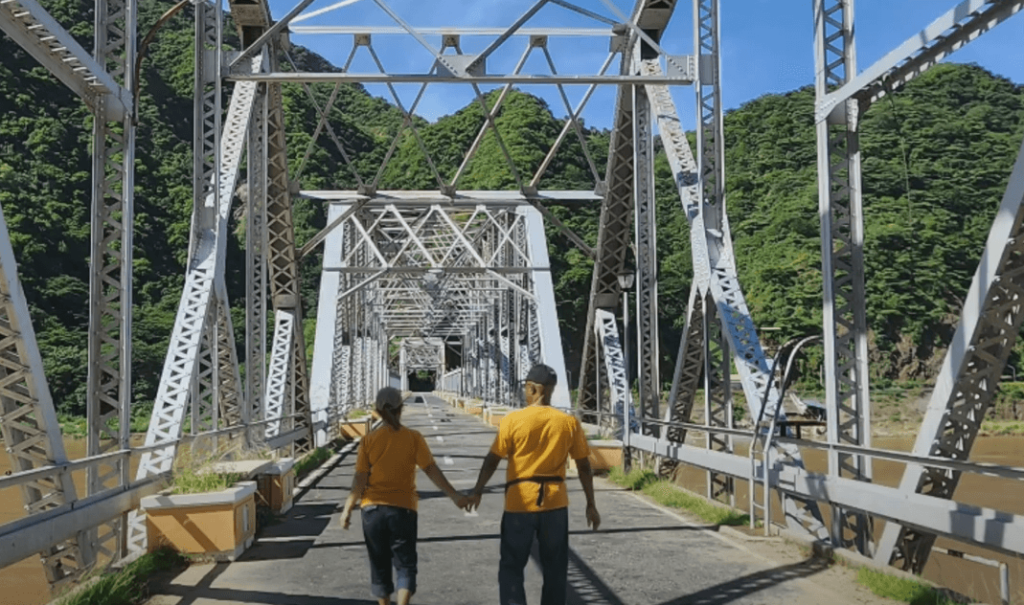
Sample 1-Day itinerary to Vigan
Day 0
10PM – Meet up within Metro Manila
10:30PM – Departure going to Vigan
Day 1
6AM – Arrival at Vigan City
6:30AM – Breakfast (own account)
7AM – Start of the day tour, visit Bantay Bell Tower, Calle Crisologo, Vigan Cathedral, Plaza Salcedo, Plaza Burgos, Jeannie Piamonte Garlic Vigan Longganisa & Bagnet, Pagburnayan (RG Jar Factory) and Baluarte Resort and Mini Zoo
12PM – Lunch at Hidden Garden (own account)
1PM – Resume tour, visit Syquia Mansion Museum, Quirino Bridge and Vigan Pasalubong Center
4PM – Departure going back to Manila
7PM – Dinner along the way
11:55PM – Arrival at Manila
Note: the sample itinerary above is just a basis or guide of the tour and might change depending on the traffic, and unforeseen events.
Things to bring on your visit to Vigan:
Jacket
2 to 3 set of clothes
Bottled water
Slippers and sandals
Garbage bag or plastic bag
Personal medicine
Toiletries like tissue, toothbrush and toothpaste
Snacks
Cash and Wallet
Backpack
Mobile phone and camera
How to Go to Vigan
By commute:
Option 1:
- From Makati City, ride a jeep going to Guadalupe Commercial Complex Mall.
- From Guadalupe Commercial Complex Mall, walk for a few minutes to go to Guadalupe MRT station and afterward ride an MRT train going to Cubao MRT station.
- At Cubao MRT station, walk towards the Partas Bus terminal or Dominion Bus Lines terminal or Viron Transit terminal in Cubao.
- Then ride a passenger bus going to Vigan, Ilocos Sur. The approximate travel time will take eight to ten hours depending on the traffic situation.
Option 2:
- From Manila, ride a jeep going to the Maria de Leon Trans terminal in Sampaloc.
- Then ride an airconditioned bus bound for Vigan City.
Option 3:
- From Metro Manila, book a trip and ride an AirAsia airplane going to Laoag City.
- Then from Laoag City, ride a bus, van or any type of public transport going to Vigan. The estimated road travel time is one hour and twenty minutes.
Note: Book tickets online or in the designated terminal as early as you can for a hassle-free trip.
Reminders and Tips:
- If your group has ample time for a long vacation then from Vigan City you may want to visit Pagudpud. Driving to the municipality of Pagudpud from Vigan will take approximately a three hours road trip.
- The best month to visit Vigan City is during the Christmas season which starts in October and up to the month of December. Moreover, you have the option to visit Vigan during the city celebrates festivity in January and during the summer season in the Philippines.
- If you don’t have a car then I deeply encourage getting a packaged tour when you plan to visit Vigan City for luxury and aid. Included in the Vigan City day tour package is a comfortable round-trip air-con private van service from Metro Manila to Ilocos Sur and vice versa, a toll fee, a tour coordinator fee, a gas fee, a driver’s food, and a parking fee. On the other hand, excluded from the day tour package is restroom fee, personal food and expense and entrance fee to some places.
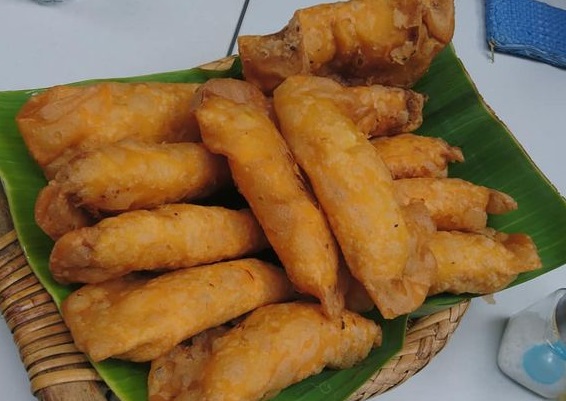
- Vigan empanada is a delicious Filipino street food and it’s a must-try food for every tourist visiting the city and the province of Ilocos Sur. It is a deep-fried dessert stuffed with different kinds of vegetables such as bean sprouts, carrots, green papaya, toge, and monggo. Vigan empanada differs from the other empanada in the Philippines because it consists of skinless longganisa, whole egg, minced hotdog, and pure vinegar sauce containing pepper and onions.
- Vigan empanada costs around forty to a hundred pesos depending on the size and filling. It is good food for filling the stomach after exploring the tourist attractions inside the city. From my experience, the Vigan empanada is very akin to the thin taco. It is an awesome food for breakfast, snacks, lunch, and dinner meals.
- I highly advise you to ride a horse-drawn carriage in getting around Vigan to support the livelihood of the locals and to have a gratification of the past colonial days in the Philippines. Also, In order to have memorable night I want you to visit Plaza Salcedo to watch the dancing water fountain show.

- The approximate budget and expense for a day tour in Vigan is 2100 pesos which include transportation and food.
There you have it, backpacker. The best method to make yourself happy is to enjoy your life and your soul. All in all, I anticipate this Vigan blog has been valuable to you and to your circle of friends. Keep safe and have a good day. Thanks for reading my blog.


